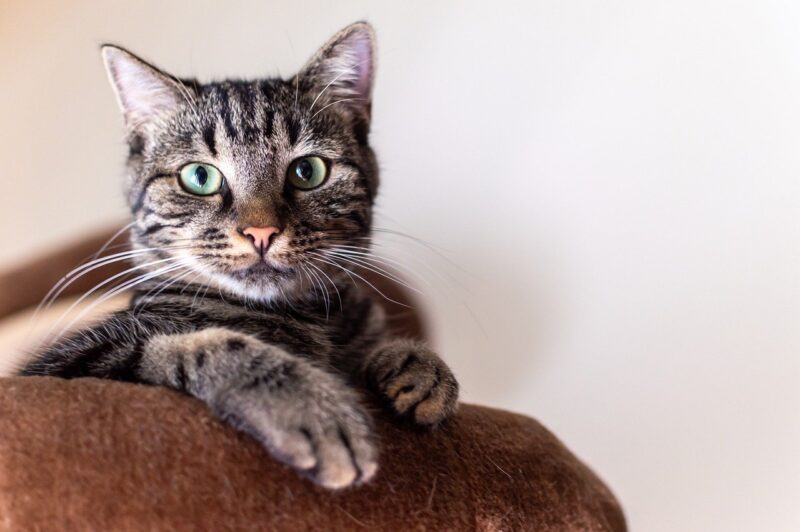Are Cats Really Aloof? Debunking Common Myths About Our Mysterious Feline Friends
November 13, 2024

Cats have long held a special place in the hearts of pet owners across the globe. Often heralded as the mysterious companions of choice for those who enjoy independence and a bit of quirkiness, cats evoke a myriad of perceptions—from aloofness to ultimate creator of comfort. However, the idea that cats are inherently antisocial is often challenged by their behaviors and emotional complexities.
In this article, we will delve into the common myths about cats, particularly focusing on their socialization, affection, and behaviors that give rise to the narrative of aloofness. Join us as we uncover the truth and celebrate these enigmatic creatures that many adore.
Understanding Cat Behavior
To debunk myths, it is essential to first understand how cats communicate and express their emotions. Unlike dogs, who have a more overtly social demeanor, cats are often more subtle in their interactions. This subtlety is frequently misinterpreted as aloofness when, in reality, it is an integral part of their nature.
Cats use a variety of vocalizations, body language, and scent markers to communicate. For instance:
- Vocalizations: While cats may not bark or howl, they have a range of sounds including meows, purrs, and hisses that convey their feelings and intentions. They often use different sounds depending on the context, such as asking for food or expressing annoyance.
- Body Language: A cat’s posture, ear position, and tail movements provide clues about their emotional state. A cat with relaxed ears and a raised tail is usually happy, while flat ears and a low tail might indicate fear or aggression.
- Scent Marking: Cats have scent glands located on their cheeks, paws, and forehead. They will often rub against people or objects to mark territory and communicate familiarity and comfort.
When considering these behaviors, one begins to see that cats are far from the solitary creatures they are often portrayed as.
Myth 1: Cats are Aloof and Independent
One of the most prevalent myths about cats is that they are inherently aloof and prefer solitude over companionship. This stereotype has its roots in the independent nature of cats, bred through generations by humans who valued their pest control skills over sociability.
While it is true that many cats exhibit independent behavior, this does not mean they lack affection or social needs. Studies show that many cats enjoy interacting with humans and can form strong bonds with their owners. Some signs of a cat’s affection include:
- Kneading: Cats often knead their owners’ laps using their paws, which is a sign of comfort and affection from their kitten days, showing that they feel safe and loved.
- Purring: While purring can indicate contentment, cats also purr when they are stressed or soothing themselves, further indicating their complex emotional lives.
- Following You Around: If your cat follows you from room to room, it’s a clear sign they enjoy your company and want to be near you, seeking affection and engagement.
So, while some cats may enjoy their alone time more than others, it does not inherently mean they are aloof. Instead, they are simply navigating the complex emotional landscape of their social needs differently.
Myth 2: Cats Don’t Need Social Interaction
This myth stems from the belief that since cats can be left alone for long periods without distress, they don’t crave social interaction. However, the reality is quite the opposite. Cats are social creatures that often thrive on interaction, both with humans and with other felines.
Research demonstrates that cats are most relaxed and exhibit fewer stress-related behaviors when they live in multi-pet households, providing them with opportunities for play and interaction. Engaging activities such as:
- Playtime: Engaging cats in interactive play stimulates their hunting instincts and allows for bonding. Toys that mimic prey movement can evoke excitement and guarantee social interaction.{
- Training: Cats can be trained to do tricks and follow commands, which can improve your relationship and provide mental stimulation while facilitating communication and trust between you and your feline friend.
Thus, while cats can manage alone for periods, they benefit greatly from social interaction, reinforcing their solid need for companionship and emotional fulfillment.
Myth 3: Cats are Unaffectionate
Another common myth is that cats aren’t affectionate and do not show love like their canine counterparts do. This misconception likely arises from the differences in how cats and dogs express their affection. Dogs often greet their owners excitedly, while cats demonstrate affection in more reserved ways.
Cats have unique ways of showing affection that can be subtle yet profound. Some signs of affection in cats include:
- Head Butting: Cats often rub their heads against their owners as a sign of love and a way to transfer their scent, marking them as safe and familiar individuals in their lives.
- Slow Blinking: If your cat gazes at you and slowly closes their eyes, this behavior is commonly interpreted as a sign of trust and affection. You can even reciprocate by slowly blinking back to strengthen your bond.
- Bringing “Gifts”: Cats might bring you small prey or their toys as offerings, a token of affection. In their world, sharing is a significant part of social bonding.
All these behaviors highlight that cats can exhibit affection; it just looks different compared to dogs. They may provide subtler signs of love, but they are undoubtedly affectionate companions.
Myth 4: Cats are Less Trainable Than Dogs
Another misconception about felines is that they cannot be trained like dogs. This belief comes from the notion that cats are inherently disinterested and independent. However, cats can be trained using positive reinforcement techniques, such as treats or praise, just as dogs can.
Training can range from simple commands like ‘sit’ or ‘high five’ to more advanced tricks such as using the toilet or walking on a leash. The key to successfully training a cat is patience, consistency, and using motivation—essentially rewarding the behavior you want to see.
Feline training does not only create an understanding between pets and their owners but also enriches their lives, stimulates their minds, and helps them adapt to various environments.
Conclusion
In conclusion, the portrayal of cats as aloof and distant beings is often exaggerated and rooted in common misconceptions. Understanding how cats express their emotions and the nuanced way they demonstrate affection reveals their complex yet affectionate nature.
While they may not always seek out constant attention like dogs, cats desire companionship and can indeed form strong emotional bonds with their owners. By debunking these myths, we gain a better appreciation for our feline friends, recognizing them as intricate beings full of personality, affection, and social needs.
So, the next time you observe your cat lounging in a corner or batting at a toy, remember that beneath that seemingly aloof exterior lies a creature capable of love, laughter, and connection.
Whether your kitty takes center stage in your heart or remains your quiet companion in the background, they all contribute uniquely to the joyful tapestry of pet ownership.





